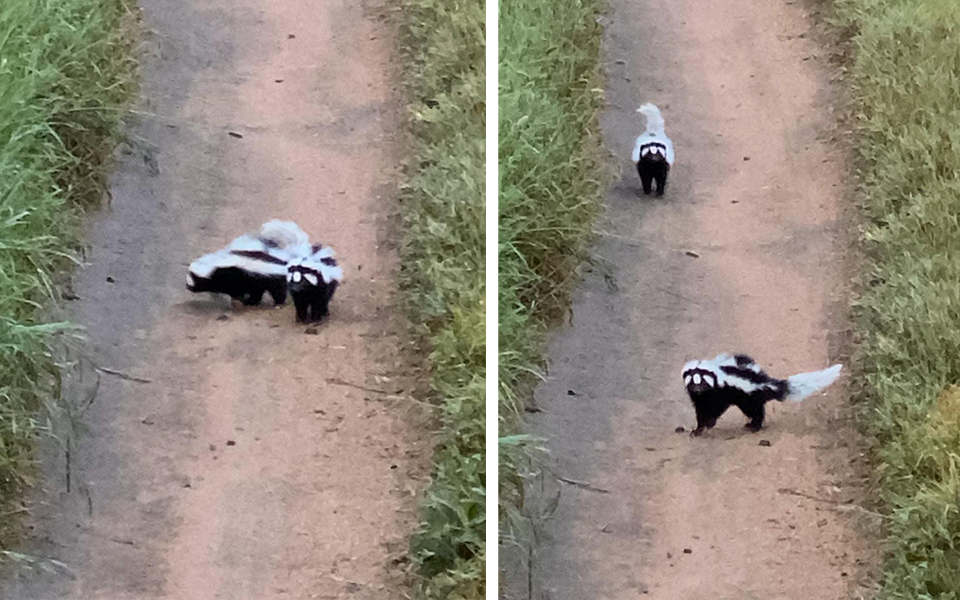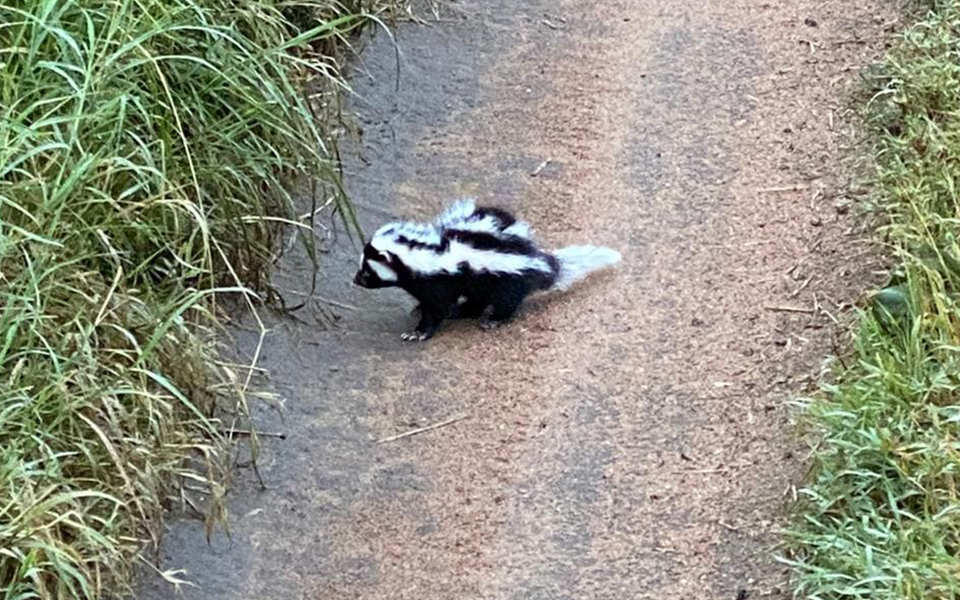The Zorilla: The Coolest Safari Creature You’ve Never Heard Of
A rarer sighting than the pangolin, and much more elusive than the serval; to see a zorilla in the wild is quite literally a once-in-a-lifetime experience. However, to spot a zorilla, you’ll need to know what a zorilla is first.
Also known as the striped polecat, the zorilla is part of the mustelids family which includes the weasel, badger, and otter. All mustelids have the ability to produce and repel scents from their well-developed anal scent glands. They are quite small in size, weighing between 22 ounces (640 grams) to 53 ounces (1000 grams) and measure just 21 inches (550 millimetres) in size. Lenganasa, our guide at Namiri Plains, spotted a pair of zorilla making their way down one of the Serengeti National Park roads close to our camp. You can see just how tiny they are compared to the tyre tracks on the road!
Zorillas are nocturnal creatures, which makes this sighting even more special. Not only is it incredibly difficult to see them at night, but to spot two zorillas in the day is unheard of.
One could easily mistake a zorilla for a skunk, however, the two are not the same. While both creatures have coarse black hair with white spots and stripes, the zorilla has three distinctive white spots on their faces – one above each eye and one in the centre of their head as well as the characteristic four white stripes which run down their backs.While skunks and zorillas are related, we do not have skunks in Africa as they are only found in the northern hemisphere.
Zorilla vs skunk: so what’s the difference?
Both are nocturnal animals, however, the zorilla much prefers spending their days snoozing in hollow trees or rock crevices while skunks are known to dig burrows. Another well-known trait both of these animals share is the fact that, when threatened, they spray a sticky, foul-smelling liquid from their anal glands. Everyone knows how stinky a skunk’s spray is, but it has been said that the zorilla is even smellier! In fact, they are widely considered to be the world’s smelliest animal.


Zorillas are known to be solitary animals, the only regular interaction they have with other zorillas is when they are family – so the two which were spotted close to Namiri Plains must be related seeing as they get along well and seem to be fairly comfortable with one another.
More Destinations Articles

What’s the difference? National Parks, Game Reserves, and Conservancies in East Africa
02 February 2020To most of us, a national park, game reserve, or conservancy are all the same...

7 Of Our Favourite Things About Lake Manyara National Park
04 December 2019Lake Manyara National Park is located in Tanzania's Arusha and Manyara region...

Naboisho: Home To The Mara’s Newest Pool
28 November 2019Naboisho is now home to the Mara Naboisho Conservancy’s newest pool. During t...

Guest Gallery: The Serengeti At Its Best
27 November 2019We recently had the pleasure of welcoming guests, Chris and Monique Fallows t...






